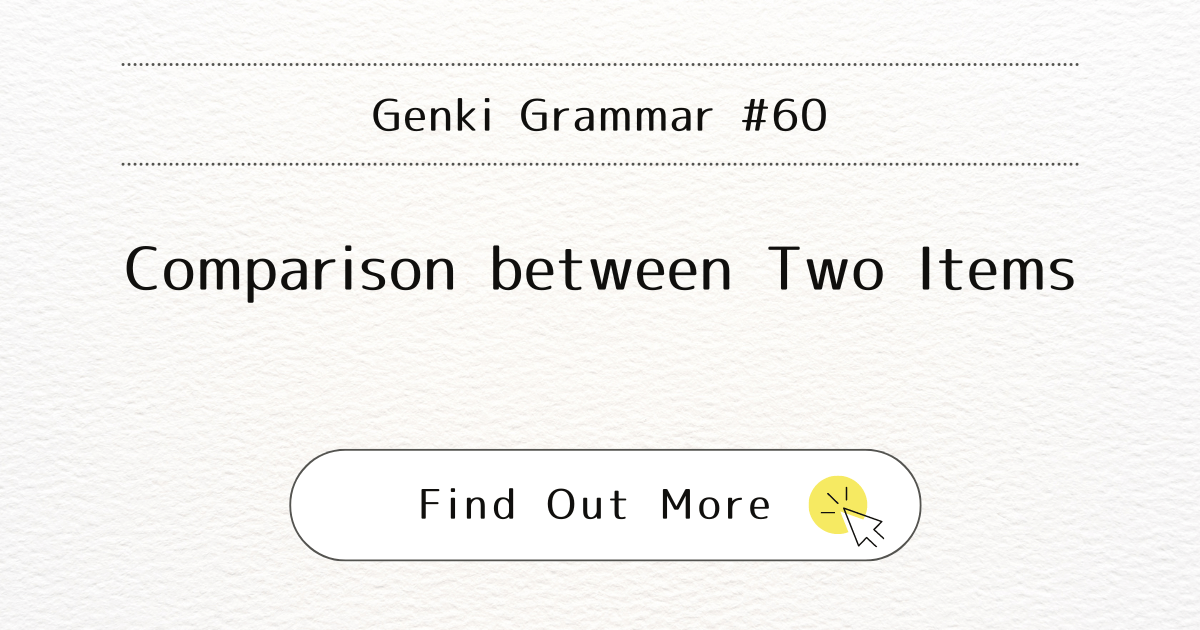
Introduction
In this blog post, we will learn how to compare two items in Japanese. Unlike in English, adjectives in Japanese do not change form in comparative sentences. Understanding how to properly frame these comparisons will help you express ideas more clearly in Japanese.
What It Means
In Japanese, to compare two items, you can use the following structure: Aのほうが Bより (property)。 This means “A is more (property) than B.”
When You Use It
If you want to ask a question comparing two items, you can say: AとBとどちらのほう / どっちのほうが (property)。 This means “Between A and B, which is more (property)?”
For example: A: 日本とイギリスとどちらのほうが寒いですか。 (Nihon to Igirisu to dochira no hou ga samui desu ka?) Which is colder, Japan or Britain? B: イギリスのほうが寒いです。 (Igirisu no hou ga samui desu.) Britain is colder.
Examples
アメリカのほうが日本より大きいです。 (Amerika no hou ga Nihon yori ookii desu.) America is larger than Japan.
Note
In real life, the phrases Aのほうが (A no hou ga) and Bより (B yori) often appear in the reverse order. This can be misleading, so it’s important to listen carefully to the words のほうが (no hou ga) and より (yori) to understand which item is being compared as superior.
Conclusion
Mastering comparisons in Japanese will greatly enhance your ability to express preferences and make comparisons in everyday conversations.



